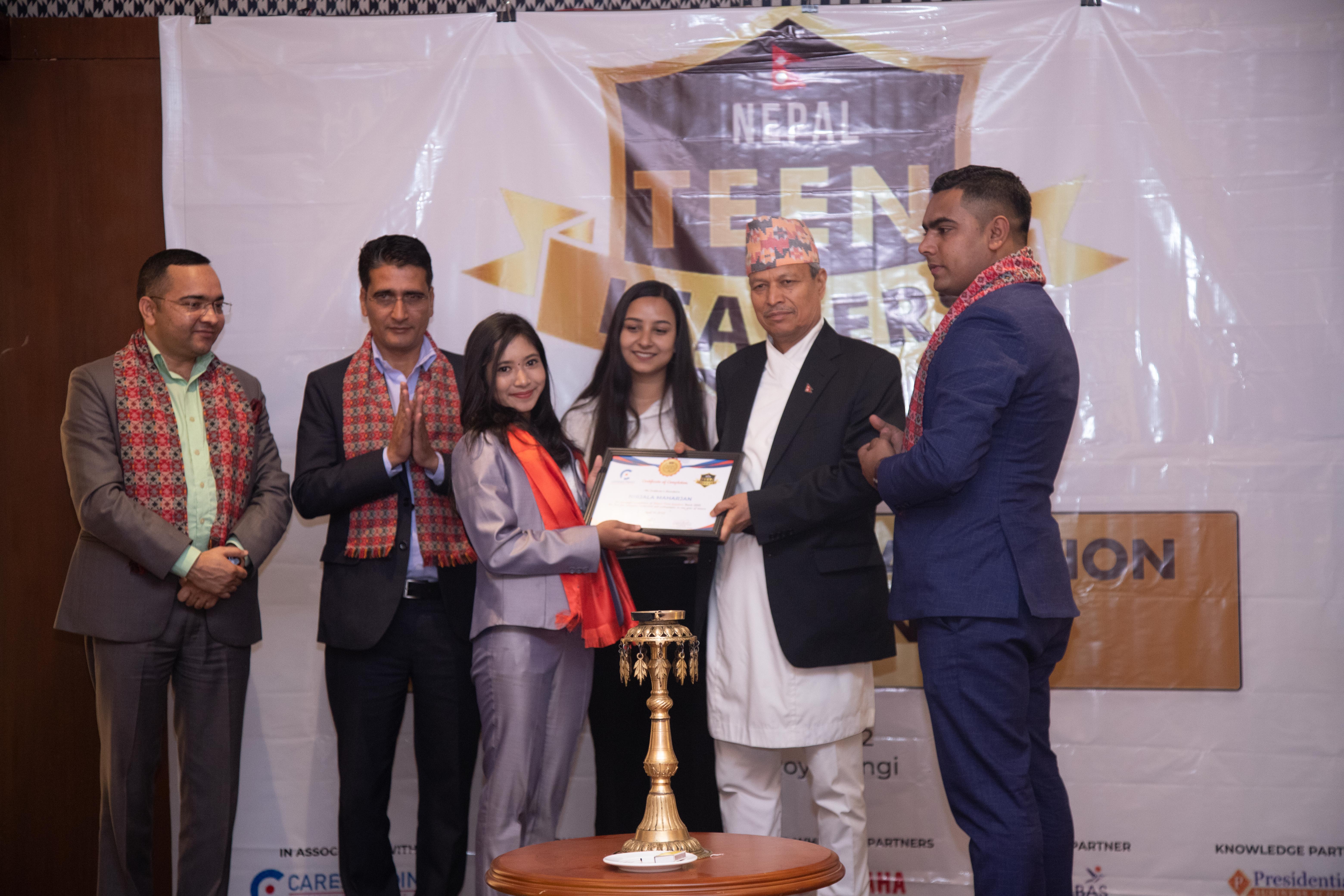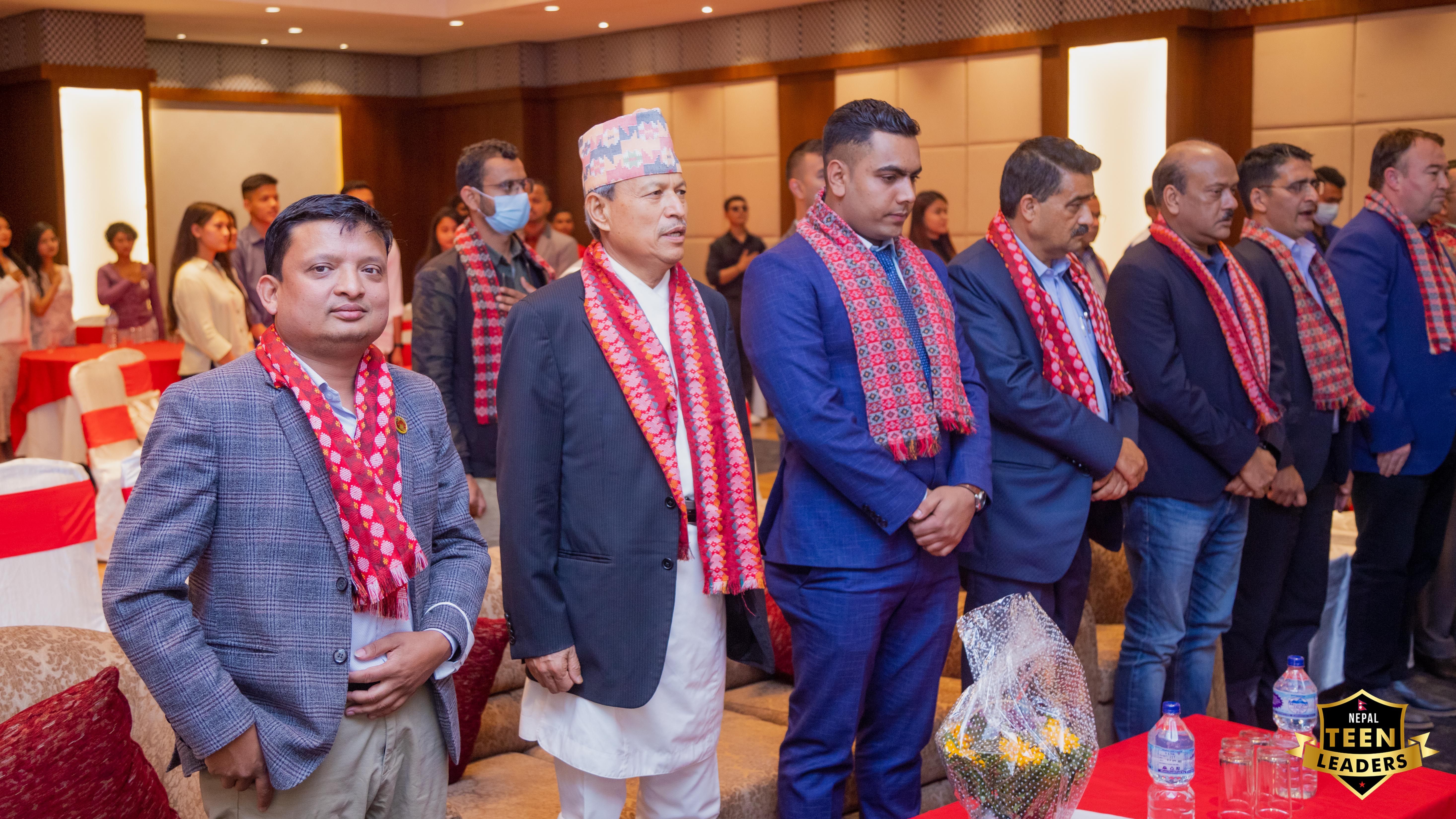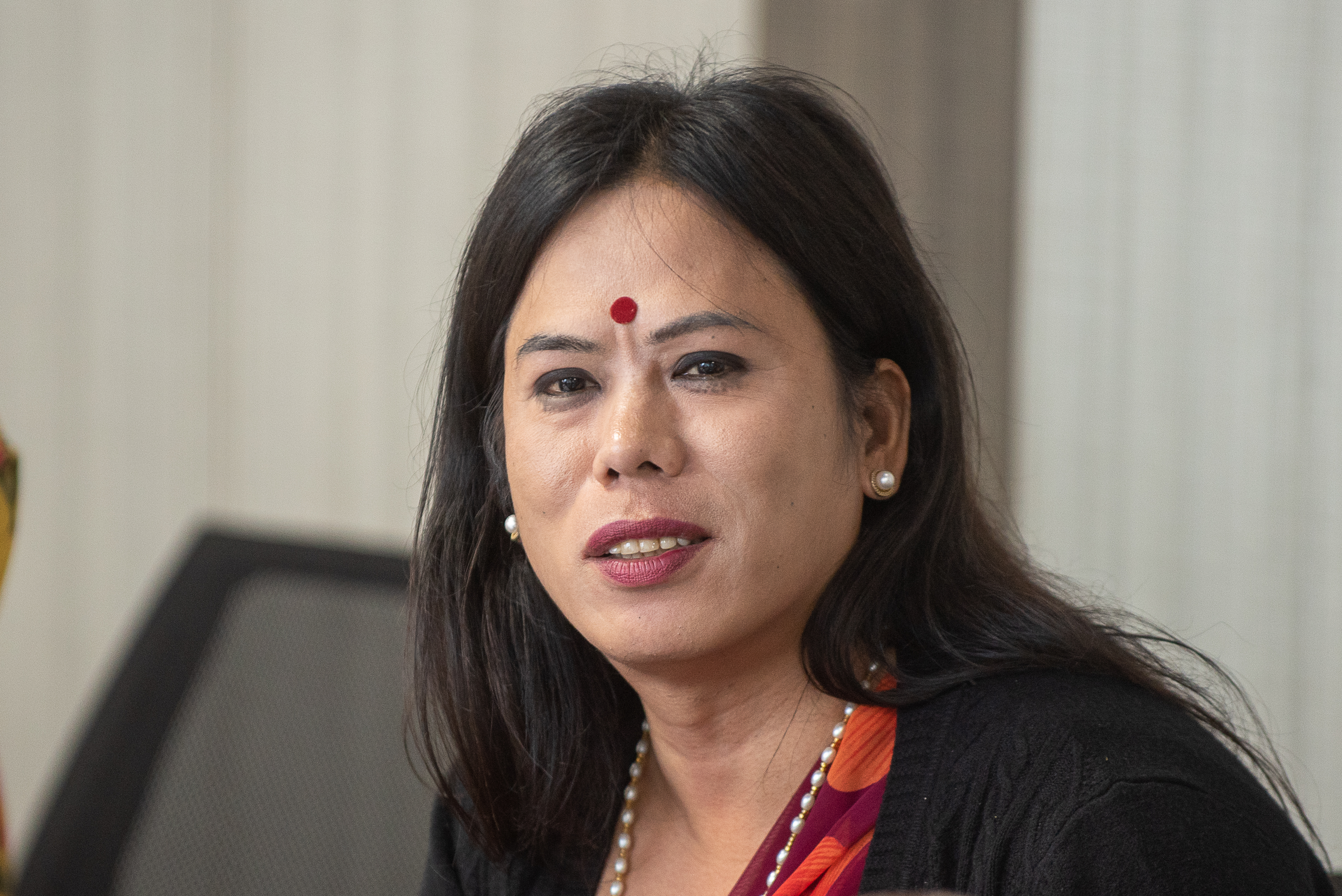ApEx roundtable on Nepal-China relations
Nepal-China relations have been rather choppy of late, particularly after the Nepali parliament’s ratification of the MCC compact. China believes the current (election-bound) Sher Bahadur Deuba government does not prioritize ties with the northern neighbor. Members of the government, meanwhile, seem wary of recent Chinese assertiveness in Kathmandu.
When Chinese Foreign Minister Wang Yi visited Nepal in the third week of March, Beijing and Kathmandu were expected to mend fences and sign something concrete under the BRI. It was not meant to be.
This week ApEx held a roundtable with some China experts on the current state of Nepal-China relations. Excerpts:
(Note: Indira Adhikari and Sharada Ghimire, the two other invitees to the roundtable, had to pull out last-minute due to personal emergencies.)
China has become a bargaining tool for power
Pramod Jaiswal
(Research Director at Nepal Institute for International Cooperation and Engagement, with specialization in China and South Asia)

To understand China’s Nepal policy, it is imperative to delve into its larger South Asia policy. Beijing has prioritized South Asia with the view to developing its southern and western regions, particularly Tibet, which is comparatively less developed than other parts of China.
Xi Jinping is the first Chinese president to visit all South Asian countries, except Bhutan with which China does not have diplomatic relations. With Nepal, China is developing relations in trade, defense, and security. It is also engaging with Nepal at the political level.
Scores of countries seem eager to enhance ties with China for their economic development, but we have been unable to do so. Even the countries that have hostile relations with Beijing are benefiting from China’s growth. But even as a neighbor, we haven’t been able to strengthen ties with China.
Whenever our politicians feel that their positions are under threat, they try to use China as a tool to stay in power. This happened during the Panchayat regime, and this is happening today. Even when the communist government led by KP Sharma Oli was in power, there wasn’t much progress in Nepal-China relations.
China will not engage with Nepal to the extent of offending India. What China rather wants in Nepal is a trustworthy and long-term partner to address its security and economic concerns. Before 2008, China was completely reliant on Nepali monarchy to pursue its interests here. Now, China is engaging with all political parties.
There has been much rhetoric about MCC and BRI, but what is our official stand on these issues? We never delve into the economic aspects of these issues, only seeing them through the narrow lens of nationalism. We lack the vision and willpower to benefit from China’s rise. It’s high time that our political leadership mended its ways.
Deuba has chosen one neighbor over another
Gopal Khanal
(Foreign affairs advisor to KP Oli during his first term as prime minister)

We have to understand that China is an emerging superpower. The world is becoming multipolar, and China’s foreign policy has vastly changed from the one adopted by Deng Xiaoping. Beijing is now more assertive in the international arena than ever before.
China shares borders with 14 countries. But it wants to engage not just with its neighbors, but also with the world at large. Thus its greater presence in Nepal is to be expected. But it is crucial that Nepal adopts a balanced foreign policy with India and China. Both the neighbors are equally important to us.
But it seems the current five-party ruling alliance undervalues China. There is a perception that this government favors Western countries. China should be Nepal’s highest foreign policy priority. There have been some departures in our bilateral engagement with China under PM Deuba. First, you see a clear anti-China prejudice. For instance, soon after its formation, the incumbent government formed a panel to look after alleged Chinese encroachments of Nepali territories, even though the two previous governments had already concluded that there was no border dispute. Second, when Chinese Foreign Minister Wang Yi visited Nepal, there were no talks on BRI projects.
I see the current government choosing one neighbor over another. Due to serious lapses in judgment of our political leadership, we find ourselves in a difficult geopolitical spot. When Chinese President Xi Jinping visited Nepal in October 2019, he talked about turning Nepal from a landlocked country to a ‘land-linked’ country. This was a momentous announcement but there was then no follow-up from our side. We have never seen our relations with China through the lens of larger national interest.
There have been some mistakes from the Chinese side as well. For instance, Chinese Ambassador to Nepal Hou Yanqi’s running-around to save the Nepal Communist Party from imploding did not send a good message. Likewise, China could have resolved the problems at border points to smoothen the supply of goods. On the MCC compact, too, it would have been better had Beijing refrained from making any statement.
Indo-Pacific’s prominence has affected Nepal-China ties
Rupak Sapkota
(Former Deputy Executive Director at the Institute of Foreign Affairs under foreign ministry)

There are three ways of viewing Nepal-China relations. First is the larger geopolitical context. There has been extreme pressure on international power-balance of late due to growing rivalry among big powers. Strategic convergence between India and the US is increasing, and China and the US are headed towards confrontation. So the geopolitical center of gravity is gradually shifting to the Indo-Pacific. Such developments are likely to have some implications on Nepal’s national security and sovereignty as well—and which is also why we are seeing some stress in our relations with China.
Our economic ties with China are stagnant. This did not happen even when there was a supposedly China-friendly government of left parties at the helm. We signed the transit and transport agreement with China, but it didn’t move ahead. Similarly, we signed several vital agreements when Xi Jinping was in Nepal, and they too remain unimplemented.
I think there is a structural problem. Trade and connectivity with China should run parallel to our relations with other countries. We often make the mistake of seeing China as an alternative when our relationship with the other neighbor sours. Carefully balancing our neighbors should be the utmost priority of any government.
China now sees Nepal not only from the security viewpoint but also as a strong economic partner. In recent years, Chinese investments in Nepal have increased but are still to benefit from the latest Chinese technology and knowhow. At the same time, there is growing interest among the Chinese about Nepal, which can be seen in Chinese social media platforms.
In order to close the loopholes in the conduct of our foreign policy, including with China, we must have a sound mechanism to provide timely inputs to the government. But what we see is our policy-related institutions are not functioning well due to lack of resources, politicization and other issues.
No institutional framework to settle Nepal-China issues
Upendra Gautam
(General Secretary at China Study Center-Nepal)

Frankly speaking, geopolitically, we are not in a comfort zone. Nepal should have a long-term view on our relations with China, which is lacking. We have policy inconsistency with China. We should stop viewing our ties with any country from the perspective of one party or government. Whenever there is a government change in Kathmandu, a new foreign policy is drafted. But why? The basic framework of foreign policy should remain unchanged.
The problem is not just with the present government. For instance, time and again Nepal has failed to take up its issues with China in a frank and assertive manner. Our individual leaders take up important issues with China without understanding that China will not heed them until such proposals come via official channels.
We should keep our relationship with China within a certain institutional framework. Without that, Nepal has been unable to raise its issues with China in a systematic way. We have signed many agreements with China, but have they been incorporated into our national plans and policies? Obviously not.
We are witnessing a sort of anarchism in our bilateral relationship with China due to a culture of indiscipline. When we talk to China, we should tell them exactly what about their policies hurt us so that they can go about addressing them. But seldom do we do enough homework to identify our issues or to present them clearly before the Chinese.
Nepal should pursue an independent foreign policy. Geopolitical pressures and concerns are always there, but we can handle those issues with right vision and leadership.
We should also deal with China without third-party influence. For instance, on the MCC compact, the Nepali prime minister could have held a phone conversation with the Chinese to assure them that its parliamentary endorsement would not affect Nepal-China relations.
One thing I want to add concerns Nepal-China railway. Nepalis seem to believe that the railway can be built overnight. But we have no good plans for it. You cannot expect China to build such an expensive project and drop it in our laps. Nor have we been able to convince the Chinese that we have either the resources or the manpower to operate such a tricky rail line.
AMN declares war on tobacco
To create awareness and sensitize the public on the harmful effects of tobacco, the Annapurna Media Network (AMN) on April 27 launched the ‘No Tobacco Campaign for Healthy Nepal’ in collaboration with Nepal Development Research Institute (NDRI) and other relevant stakeholders. The three-month campaign will also pitch for an increase in tobacco tax in the upcoming fiscal 2022/23.
A panel discussion on ‘Tobacco, an ongoing crisis and taxation as a prominent mitigation’ was held on the occasion of the campaign launch, where speakers emphasized the important role of the media in promoting a healthy lifestyle.
They also recommended various ways, including taxation, to reduce the sale and consumption of tobacco products. As part of the campaign, AMN will host and cover all news and activities of the campaign in coordination with Simrik Foundation.
According to the World Health Organization, tobacco is one of the biggest global public health threats. Every day, tobacco products kill more than eight million people around the world. More than seven million of these deaths are the result of direct tobacco use while around 1.2m are the result of non-smokers being exposed to second-hand smoke. A study by NDRI shows that there were 37,529 tobacco-related deaths in Nepal in 2021. There were four deaths every hour.
NTL graduates its third batch
The Nepal Teen Leaders (NTL) has organized a graduation and welcome ceremony for its third and fourth batch respectively amid a certificate distribution program at Hotel Royal Singi in Kathmandu on 16 April 2022. The event was inaugurated by former Deputy Prime Minister Bhim Rawal who urged youths to join politics. He added that it is not possible to improve our situation without youth’s participation and efforts on mainstream politics.
Surendra Basnet, vice president of National Youth Council showed his commitment to collaborate with NTL members in various youth-centric programs in the coming days.

Similarly, president of Higher Institutions and Secondary Schools’ Association Nepal (HISSAN) Ramesh Silwal thanked the executive team of NTL for conducting such a year-long program as it helps students to focus on their extracurriculars simultaneously. Chairman of Golyan Group, Pawan Golyan said, “Post teen phase is the time to grow oneself from every direction as this time has the hunger of learning.”
Editor-In-Chief of AP1 HD television Tikaram Yatri suggested students to know their passion and work to achieve expertise in the similar field. “I would not have succeeded if I were in politics as that’s not my expertise,” he added. Similarly, Manoj Gyawali, deputy general manager of Nabil Bank presented the importance of extracurriculars by giving the example of process during hiring a person for a job.

General Manager of Turkish Airlines for Nepal Abdullah Tuncer Kececi said that he is happy with the progress of NTL members and his company is ready to help students whenever in need.
The program was chaired by Shiva Danai, director of NTL. He requested the stakeholders for the collaboration with NTL so that they jointly help the scenario of students. Lastly, Bishal KC, member of the organizing committee and executive director of Career Point Education Services Pvt. Ltd. said, “Nepali academic houses have provided good education to the students but they have not been able to help in their entire development. NTL is hence helping the students to connect the missing dots.”

ApEx roundtable: Don’t treat us like misfits
The constitution of Nepal has addressed the rights of LGBTIQA+ community in Articles 12, 18, and 42. Third gender has been legally recognized with its inclusion in voter rolls, immigration forms and the census. As the first South Asian country to recognize transgenders, Nepal has a progressive image. But the reality is different as the LGBTIQA+ community is still marginalized and faces discrimination of all kinds on a daily basis. ApEx organized a roundtable with a few representatives of the community to discuss how they are still victimized and what can (and should) be done about it.
The government doesn’t care about us
Pinky Gurung, President, Blue Diamond Society

Everybody wants a dignified life. Nobody wants to be disrespected and humiliated. But the LGBTIQA+ community is treated as an outlier and has to deal with constant discrimination and mental abuse. We have been raising our voice and campaigning for equal rights for 22 years and though we have made some progress, there is still a lot of work to be done to ensure even our basic rights. The government hasn’t addressed our issues because it doesn’t care about us. We are also under-represented data-wise and that puts us at a disadvantage. We had a lot of hopes pinned on the 2021 census but it has let us down.
Apart from identity crisis and societal acceptance, one of our main concerns is lack of work opportunities. This forces many people from our community into sex-work. Then again, sex-work is illegal in Nepal and we land up in problems frequently. So, what do we do to survive? Another issue is that there isn’t an understanding of the different kinds of sexual orientation and gender identities within our own community. When we are unable to understand ourselves, how can we expect other people to do so?
I believe the media has an important role and responsibility in bringing out our issues. Media can be a watchdog and make the government and other sectors accountable for their actions (and inactions).
Transgenders are portrayed as sleazy or comic characters
Neelam Poudel, model, make-up artist and activist

We are never judged by our skills but on how we look and what we wear. It doesn’t matter how much hard work I put in, the moment someone finds out I’m a transwoman they will look down on me and think of me as a sex worker. There is this underlying bias that a transgender can only be a sex worker and nothing else. A doctor has let go of my hand and walked out the moment he realized I was a transgender, denying me a consultation. That incident still makes me nervous about going to the hospital.
Nobody wants to talk about our issues as we make people uncomfortable. The society, unfortunately, is still only used to male and female. There isn’t any room for anything that doesn’t fit those two boxes. The police give us a lot of suggestions but they won’t support us when we need them to. Our stories make it to the papers and television but we aren’t given important positions in those newsrooms. The LGBTIQA+ community is sidelined because we are thought of as incapable and inept.
I think a large part of the problem lies in how we are presented and how people thus perceive us. Transgenders are portrayed as sleazy or comic characters or shown as sex workers lined up on the streets of Thamel in Nepali movies. We need normal, if not positive, representation in stories which can be crucial in changing people’s mindset about us.
Starting a family is next to impossible
Bhakti Shah, activist, Blue Diamond Society

The government doesn’t allocate a budget for our community. Even when it has a couple of times in the past, it hasn’t been dispensed. Where did it go? Why wasn’t it used to uplift our condition, to make life easier for us?
The constitution has granted our rights but there’s no practical implementation of that. As a transman, I should be able to get a citizenship identifying as a male. A transwoman should be able to get it as a female. Not everybody within the LGBTIQA+ community wants to be identified as ‘others’. But that’s the only provision available to us, unless we have a sex change certificate. The thing is not everybody can afford sex-change surgeries. They are expensive. They might not want one either since it’s risky.
Then there’s the issue of child adoption by couples within the LGBTIQA+ community. Starting a family is next to impossible. The government has a provision whereby a man and a woman who have been married for 10 years and don’t have children can adopt. It clearly says a man and a woman. So, two people of the same sex or unmarried couples can’t adopt. Many couples in our community go through a lot of mental turmoil because of that. There are legal loopholes preventing us from enjoying constitutionally guaranteed rights.
People still don’t understand what LGBTIQA+ means
Swastika Nepali, province coordinator, Mitini Nepal

The LGBTIQA+ community is ostracized and harassed on a daily basis. People think we are different, a deviation, and we are discriminated on that basis. It doesn’t help that ours is largely a patriarchal society that values men above all else. We are also limited by our rigid mindsets. Many of us are unable to share our problems with our families and not having anybody to turn to is the main reason for mental health issues in the LGBTIQA+ community.
When I came out as a lesbian, people started wondering if I was faking my periods. Many people thought gays and lesbians don’t have any sex organs. It’s appalling how people still don’t understand what LGBTIQA+ means. Unawareness and misunderstanding promote violence, abuse, and even suicide. A lesbian was raped by her father after she disclosed her sexual orientation. He thought she felt the way she did because she didn’t know what it was like to be with a man.
There are many issues that need to be addressed by the government to ensure our desires and rights aren’t sidelined. One of the main ones is our right to have families of our own. Legal recognition of LGBTIQA+ relationships, including but not limited to same-sex marriages, could be the start of establishing a more gender-neutral society as well as guaranteeing those of the community their basic rights.
Self-acceptance a huge issue in our community
Elyn Bhandari, activist, Blue Diamond Society

I look like a man but I have a uterus. I dread hospital visits. There have been times when I’ve visited gynecologists and they have outright refused to treat me, judging me by my appearance. I’ve received an ultrasound report with the size of the prostate gland, an organ I obviously don’t have, clearly written on it. The registration forms at hospitals only have the option of male and female and that in itself feels like harassment.
Many of us are undergoing hormone therapy but there are very few professionals who understand and are empathetic towards us. The health system should access our needs and create facilities according to our requirements. Health policies and plans aren’t LGBTIQA+ community friendly at the moment.
Self-acceptance is also a huge issue in our community and that stems from having nowhere to go. This leads to a lot of stress and we need counseling. But, again, there aren’t good counselors. We are always in a quandary about where to seek help and usually find all doors shut. Many people say they don’t know what LGBTIQA+ means but I don’t think in this day and age that should be used as an excuse for poor, discriminatory behavior anymore.



















